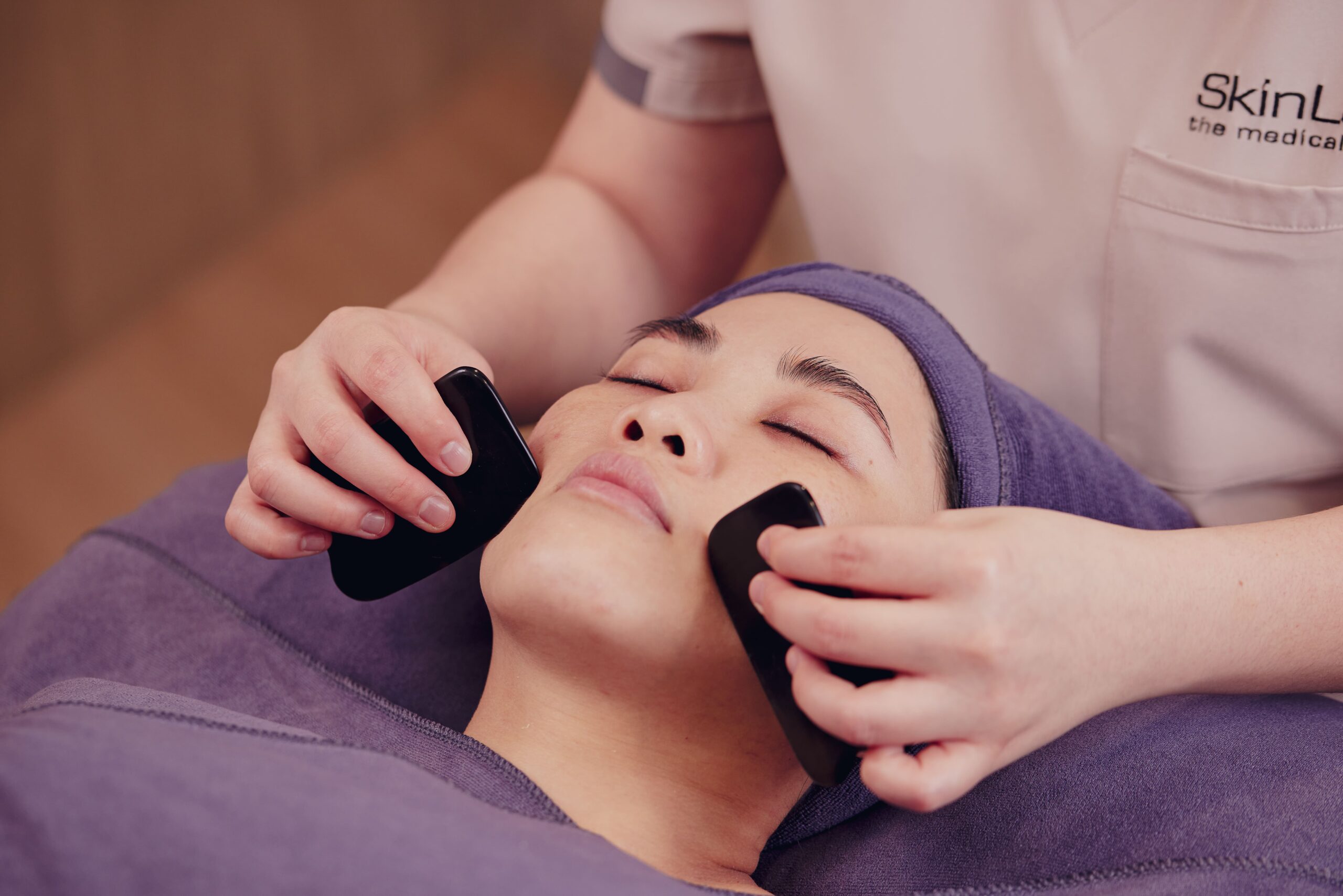Home » Is Gua Sha just a marketing gimmick? Here’s the truth
Is Gua Sha just a marketing gimmick? Here’s the truth

Some people might think that Gua Sha is just a marketing gimmick that TCM clinics use to make a little bit more money. However, for those in the know, Gua Sha is more than just scraping skin. This treatment does have beneficial applications. We just need to know what this treatment can do and what its limits are. Let’s take a look at the truth about Gua Sha.
Origins of Gua Sha

Gua Sha is a TCM practice that dates back thousands of years. Its origins are not entirely known, but it is believed to have been used since the Paleolithic Age when tools made from stones were used for various therapeutic purposes. As time passed, these practices evolved and became more refined, forming the basis for Gua Sha.
The term “Gua Sha” itself comes from the Chinese language: “gua” means to scrape or scratch, while “sha” refers to the “sand” that appears on the skin surface (petechiae). The practice involves scraping the skin with a massage tool to improve circulation and promote healing. This scraping action is believed to move stagnant Qi and blood, reducing inflammation, and promoting the body’s natural healing processes.
While Gua Sha is commonly used for pain relief, it is also used to help manage symptoms of colds, flu, and other illnesses. In the realm of beauty, the Gua Sha facial is believed to enhance skin health and appearance by increasing circulation, reducing puffiness, and relaxing facial muscles.
What are the benefits of Gua Sha Facial?

In recent years, Gua Sha has been adapted into Gua Sha facial routines worldwide for its potential benefits to facial health and beauty.
The traditional scraping technique is adjusted slightly for Gua Sha facial. In order for the treatment to be gentler, a small, smooth-edged tool often made from jade or rose quartz is used. This tool is used to massage and scrape the skin on the face and neck with light pressure. Here are some benefits believed to be associated with the Gua Sha facial:
Improves Circulation: The scraping action stimulates blood flow in the facial tissues, which can result in a healthier, more vibrant complexion.
Reduces Puffiness: The massage technique used in Gua Sha facials can help to promote lymphatic drainage and reduce fluid build-up, which can lessen the appearance of puffiness, especially under the eyes.
Relaxes Muscles: Gua Sha facials can help relax tension in facial muscles, which could potentially alleviate pain or discomfort and even reduce the appearance of fine lines and wrinkles caused by tension.
Increases Skin Firmness: Some proponents claim that regular Gua Sha facials can help stimulate the production of collagen, a protein responsible for skin elasticity. This may result in a firmer, younger-looking skin.
Better Absorption of Skincare Products: By increasing blood flow and opening up the pores, Gua Sha can make the skin more receptive to skincare products, enhancing their efficacy.
Safety and precautions
While Gua Sha is meant for most people, there are some safety precautions that should be taken for a safe experience.
Gua Sha facial is not suitable for you if you fall into the following categories:
- Inflamed/infected skin or areas with rashes, wounds or sores (including cystic acne)
- Blood disorders or diabetes
- Taking blood-thinning medication
While Gua Sha facials can be done at home, we do not recommend it as gua sha strokes must be performed deliberately and carefully to prevent side effects. A professional is more well-versed at the nuanced techniques that should be done on delicate areas of the face. Remember, Gua Sha can be beneficial, but always look for qualified therapists that are experienced in executing this treatment.
Despite the painful appearance of the red marks or bruises that often result from the scraping, Gua Sha is generally not painful and is believed to relieve various symptoms like pain, stiffness, fever, chill, cough, wheezing, nausea, and vomiting. It is also safe for long term use.
Is Gua Sha safe for long term use?
A common misconception about Gua Sha is that it is a painful procedure due to the redness and bruising that often appear after a session. However, when performed correctly, Gua Sha should not cause significant discomfort. Gua Sha involves the firm yet gentle application of pressure, especially during a facial. Therefore, any pain should signal an adjustment in technique.
The redness that appears post-treatment is not an indication of damage. In the context of traditional Chinese medicine, this ‘sha’ represents the movement and release of stagnation in blood and Qi, or energy. This redness is temporary and should fade within a few days.
Contrary to the belief that more frequent and intense sessions yield better results, moderation is key in Gua Sha. Overdoing the treatment can cause harm, which is why we should remember to give the body ample time to recover between sessions.
Finally, while Gua Sha can support a health and wellness routine, it should not replace conventional medical treatments for serious or chronic conditions. As with any health practice, it’s crucial to consult with a healthcare provider for medical advice and treatment. The effectiveness and experience of Gua Sha can greatly vary among individuals, so it’s best to approach it with an open mind and realistic expectations.
Improve your facial health with a Gua Sha facial
Feel good, look even better with our Gua Sha facial. It’s time to book a relaxing Gua Sha facial with our experienced, well-trained therapists for vibrant, healthier skin. At SkinLab, Singapore’s largest medical spa chain, our team uses the best tools and techniques in Singapore to give you the most enjoyable Gua Sha facial experience.
Make an appointment with us now.



